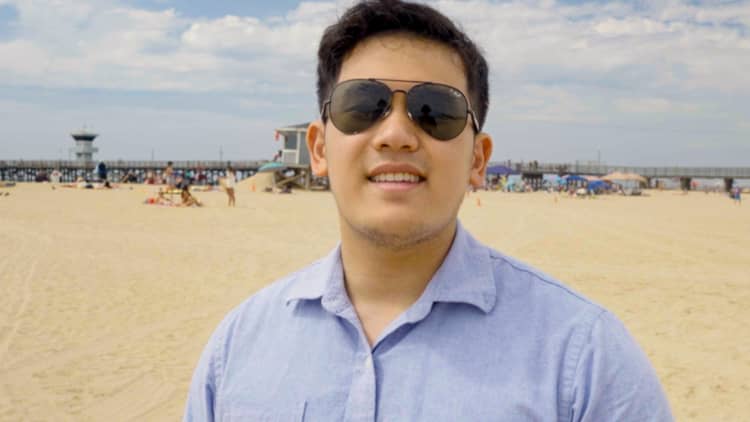Being an executive at one of Wall Street's most powerful firms — and a mother of five — requires patience, grit and impeccable time management.
Shekhinah Bass started working at Goldman Sachs when she was just 22 years old, and says sharpening her time management skills has helped her be more productive and avoid burnout as she rose in the ranks at the firm. The 39-year-old is now Goldman Sachs' head of talent strategy within the firm's human capital management division.
"I used to be jealous of all the senior executives running off to meetings and now I'm jealous of my younger self and how few meetings I had on my calendar," she tells CNBC Make It.
The longer Bass has worked at Goldman Sachs, the more she's realized that you can only achieve work-life balance "if you're deliberate and proactive about how you set boundaries," she says.
"You need to take time to recharge and do things that bring you joy," she adds. "There have been times when I haven't created that space, and it can be really draining — but setting those boundaries is where you'll see yourself excel."
There's one time management hack, in particular, that Bass swears by to maintain a strong work-life balance: timeboxing.
How timeboxing works
The technique is simple: Give each task on your to-do list an allotted amount of time, schedule it on your calendar, and block out any distractions while you're working. Continue working until the allotted time has ended, then assess your progress and move on to the next item on your to-do list.
At the start of each week, Bass organizes her calendars into different blocks for meetings, deep-focus work, and breaks, even if it's a 15-minute stretch just to "take a breather and go on a walk."
She recommends scheduling deep work for times when you have the highest levels of focus and energy. For Bass, that means setting aside 1-2 hours, usually between 8 and 10 a.m., to answer emails, develop a strategy to tackle a demanding project or write talking points for big client meetings. "When my brain is fresh and the coffee has just kicked in, that's my go time," she says.
The benefits of timeboxing
To-do lists don't often take into account the time tasks need to be completed. Timeboxing, on the other hand, gives you a clear plan for how you'll spend your day, so you're less likely to get sidetracked and feel overwhelmed by your to-do list, says Bass.
In an analysis of 100 productivity hacks, timeboxing ranked as the most effective, according to tech company Filtered.
And leaders like former first lady Michelle Obama, Virgin Group founder Richard Branson and former monk Jay Shetty all use versions of timeboxing to balance work and family priorities.
"It's helped me save hours in my workday, and find more time to be present in important moments for my family, whether that's dinner time or a school performance in the afternoon," says Bass. "Creating space for yourself both to focus and recharge is really important not just for your career, but for your peace of mind."
Want to be smarter and more successful with your money, work & life? Sign up for our newsletter!
Check out:



